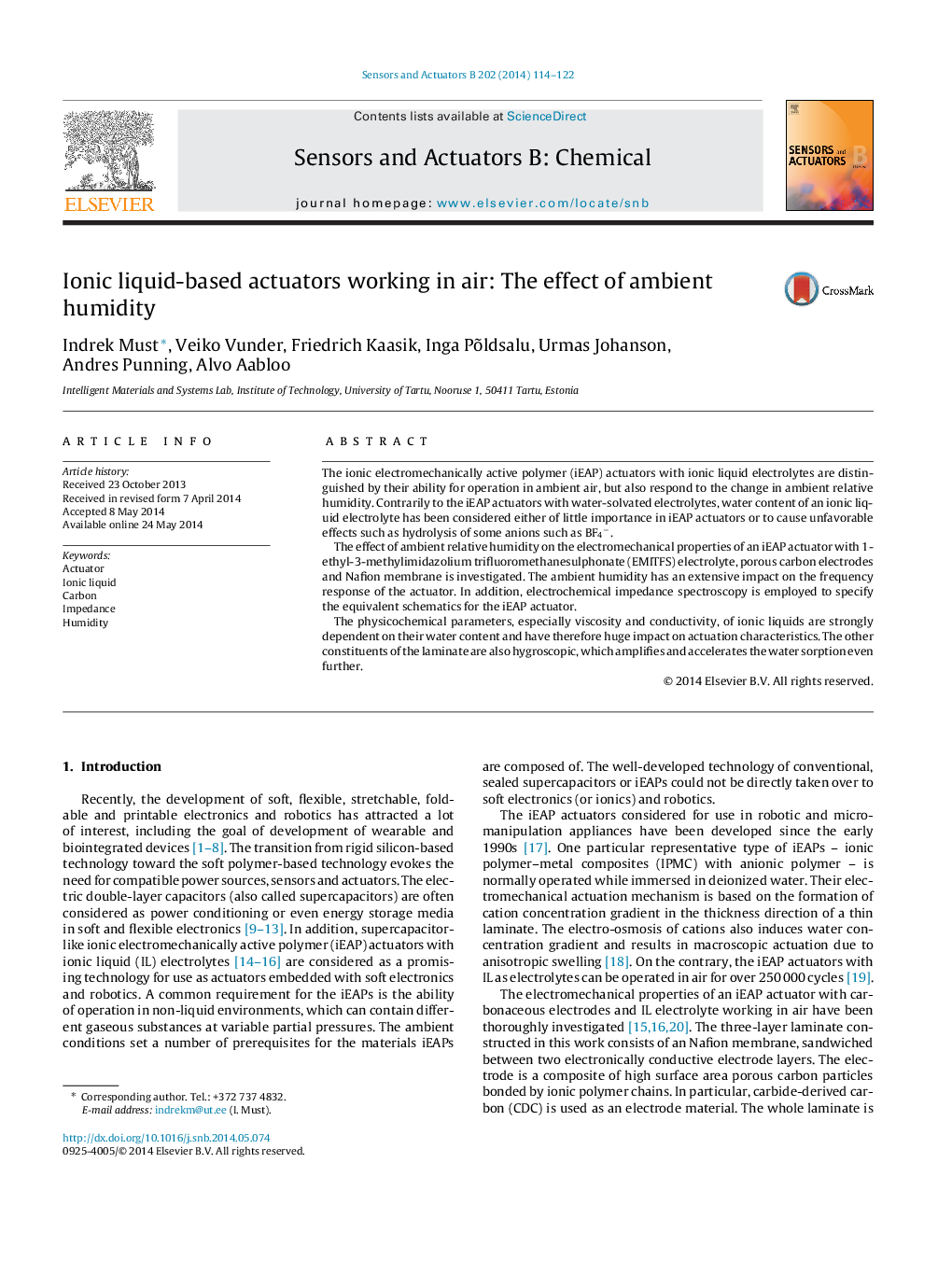| Article ID | Journal | Published Year | Pages | File Type |
|---|---|---|---|---|
| 742654 | Sensors and Actuators B: Chemical | 2014 | 9 Pages |
•Ambient humidity affects ionic EAP (iEAP) actuators with hydrophilic constituents.•Humidity content increases bending speed of iEAP actuators.•Back-relaxation of iEAPs is lower in low-humidity conditions.•Efficiency of ionic EAPs decreases with increased humidity content.
The ionic electromechanically active polymer (iEAP) actuators with ionic liquid electrolytes are distinguished by their ability for operation in ambient air, but also respond to the change in ambient relative humidity. Contrarily to the iEAP actuators with water-solvated electrolytes, water content of an ionic liquid electrolyte has been considered either of little importance in iEAP actuators or to cause unfavorable effects such as hydrolysis of some anions such as BF4−.The effect of ambient relative humidity on the electromechanical properties of an iEAP actuator with 1-ethyl-3-methylimidazolium trifluoromethanesulphonate (EMITFS) electrolyte, porous carbon electrodes and Nafion membrane is investigated. The ambient humidity has an extensive impact on the frequency response of the actuator. In addition, electrochemical impedance spectroscopy is employed to specify the equivalent schematics for the iEAP actuator.The physicochemical parameters, especially viscosity and conductivity, of ionic liquids are strongly dependent on their water content and have therefore huge impact on actuation characteristics. The other constituents of the laminate are also hygroscopic, which amplifies and accelerates the water sorption even further.
